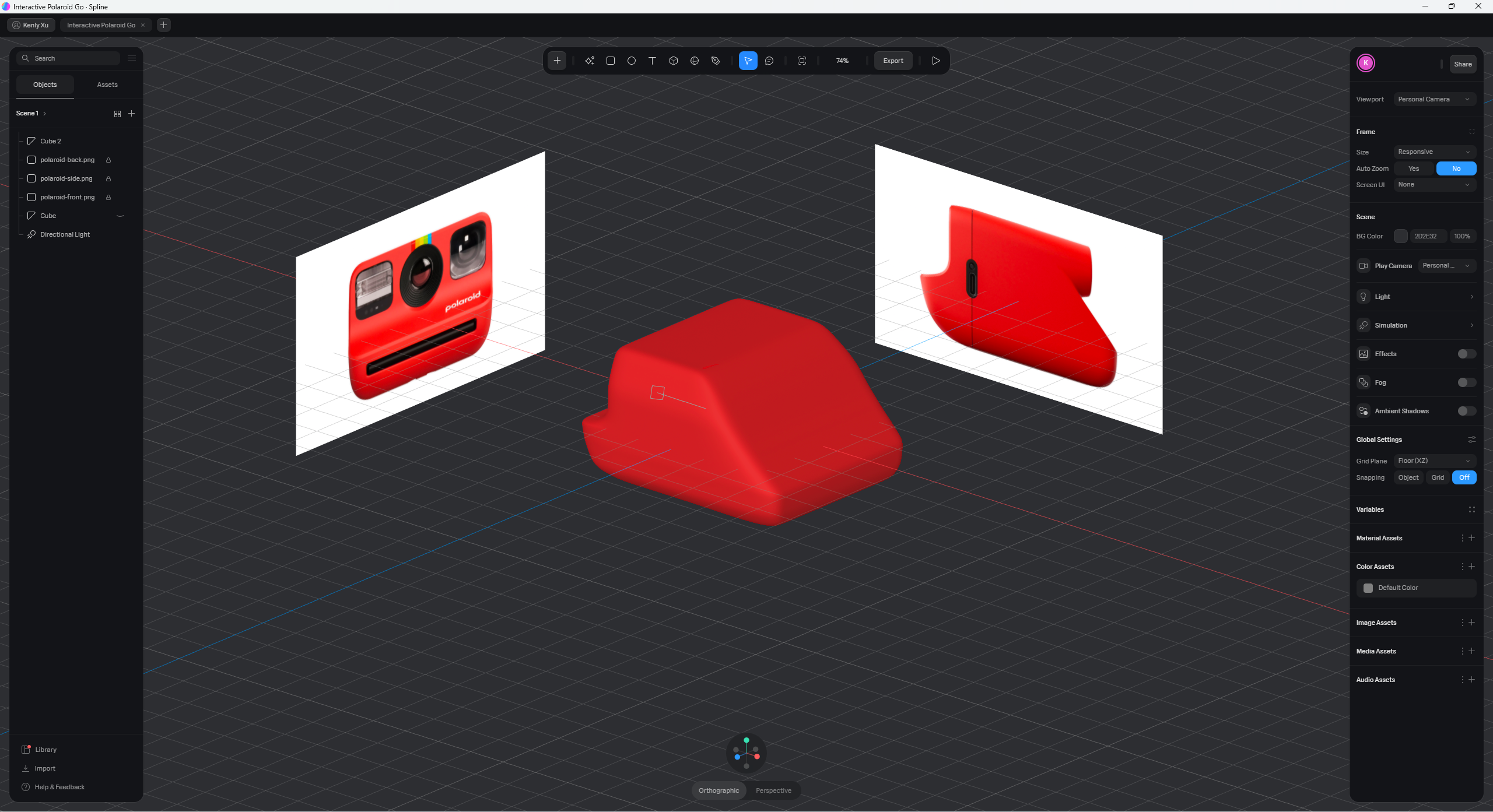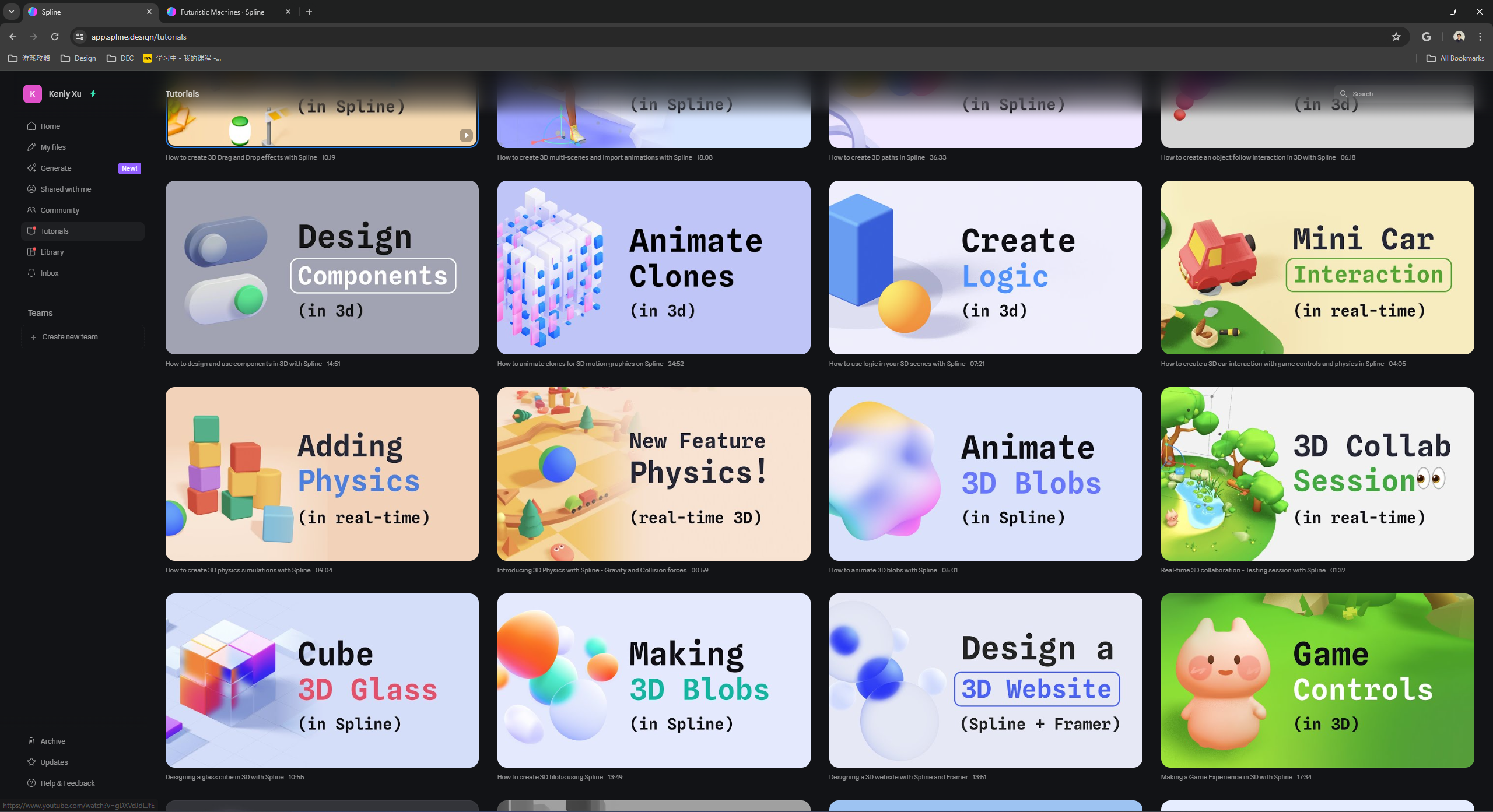During the pandemic, I discovered my passion for integrating 3D elements into visual design, starting with my first 3D tool, Cinema 4D. This journey took an exciting turn a few months ago when I stumbled upon a LinkedIn post about a web-based 3D tool similar to Figma. However, at that time, balancing my work and life to ensure product features were delivered on time made me skeptical about diving into yet another new tool.
“There are so many new tools out there nowadays, and I can’t learn all of them. The new tools come and go. There is no need to learn a tool that just looks interesting, but I might not have a design that the tool can help.”
Despite my initial hesitation, I eventually made time to explore this new tool, called “Spline,” and within just ten minutes of trying it, I was hooked enough to subscribe for an entire year.
A Familiar Interface with Powerful Capabilities
The control interface of Spline is reminiscent of Figma, with a left panel housing layers and asset libraries, a right panel for contextual settings based on the selected object, and a top toolbar offering shapes, camera, lights, and other standard 3D objects. Spline also incorporates components and variable features akin to Figma, enabling users to create reusable components, publish assets in libraries, and share them with teams.
My daily use of Figma for design work and my 3D knowledge from Cinema 4D made adapting to Spline straightforward. The Spline team has created a series of concise tutorials that guide users through individual features without the need to watch an entire end-to-end process for building a complex 3D environment.
Learning and Creating with Spline
Many Spline users, including myself, start their journey with the mini keyboard tutorial. This tutorial highlights how easy it is to create 3D animations in Spline, almost as intuitive as making a quick animated prototype in Figma.

During my work at CrowdStrike, I was tasked with creating some illustrations for empty states. Some illustrations were marked as “Doesn’t have the friendly look and feel” and thus were not selected. One such illustration, depicting a server-like machine, was deemed to resemble a nuclear device. I decided to use this illustration as a base to practice Spline.
Beyond the Basics: Exploring Advanced Features
My exploration of Spline is far from over. The tool offers features for adding physics and game controls to the 3D environment—two aspects I’m particularly excited to experiment with. These features present an opportunity to bring to life a simple game concept I had back in college, without the steep learning curve associated with professional 3D artists or game developers’ tools like Cinema 4D or Unity.

The Future of 3D Design
Spline is the perfect 3D tool for anyone eager to delve into 3D design. It’s simple and intuitive. With its ease of use and powerful features, I believe Spline has the potential to become the “Figma” of 3D design.
As stated in a review on Product Hunt, “Spline is democratizing 3D design, making it accessible to designers and creatives who may not have a background in 3D modeling.”